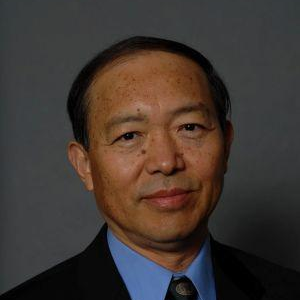Retrieval, Validation and Application of Satellite Soil Moisture Data
A special issue of Remote Sensing (ISSN 2072-4292).
Deadline for manuscript submissions: closed (20 November 2017) | Viewed by 89869
Special Issue Editors
Interests: remote sensing; geophysical parameter retrieval; airborne laser scanning; full-waveform lidar; radar remote sensing; soil moisture
Special Issues, Collections and Topics in MDPI journals
Interests: retrieval of bio-physical parameters from optical and radar data; multi-sensor data fusion; integrated approach for environmental monitoring in mountain areas
Special Issues, Collections and Topics in MDPI journals
Interests: remote sensing; earth system and climate science; soil moisture and drought monitoring; water-energy-food nexus; environment and fire science
Special Issues, Collections and Topics in MDPI journals
Interests: microwave remote sensing of soil moisture; hydrological applications of remote sensing; hydrological data assimilation
Special Issues, Collections and Topics in MDPI journals
Special Issue Information
Dear Colleagues,
In recent years, we have seen a proliferation in the provision and use of satellite soil moisture data derived from active and passive microwave sensors (SMAP, SMOS, ASCAT, AMRS-2, Sentinel-1, etc.) and optical/thermal imagers. However, there are still many open scientific question related to the way of how soil moisture data are being retrieved, validated and applied. Additionally, there is a high need to develop novel approaches for improving the spatio-temporal sampling of the data and their accuracy. Therefore, the purpose of this Special Issue is to discuss and reconcile recent methodological advances in the development, validation and application of global satellite soil moisture data. This Special Issue is related to the 4th Satellite Soil Moisture Validation and Application Workshop, which will place at the Vienna University of Technology (TU Wien) from 19–20 September 2017 (http://smw.geo.tuwien.ac.at/). Topics to be discussed at the workshop are:
- What is the quality of the current satellite products and what can we expect in the near future?
- What is information content at Level 1 and how to exploit the availability of multiple satellites?
- Who is using satellite soil moisture data and for what purpose?
- What are the best practices in validating soil moisture products?
- What are the main limitations of satellite soil moisture data from a user’s perspective?
- What is the future of satellite-based soil moisture remote sensing?
We invite in particular authors attending the workshop to submit their papers to this Special Issue of Remote Sensing.
Authors are required to check and follow the specific Instructions to Authors, https://www.mdpi.com/journal/remotesensing/instructions.
Univ.-Prof. Wolfgang Wagner
Dr. Claudia Notarnicola
Univ.-Prof. John J. Qu
Univ.-Prof. Dongryeol Ryu
Guest Editors
Manuscript Submission Information
Manuscripts should be submitted online at www.mdpi.com by registering and logging in to this website. Once you are registered, click here to go to the submission form. Manuscripts can be submitted until the deadline. All submissions that pass pre-check are peer-reviewed. Accepted papers will be published continuously in the journal (as soon as accepted) and will be listed together on the special issue website. Research articles, review articles as well as short communications are invited. For planned papers, a title and short abstract (about 100 words) can be sent to the Editorial Office for announcement on this website.
Submitted manuscripts should not have been published previously, nor be under consideration for publication elsewhere (except conference proceedings papers). All manuscripts are thoroughly refereed through a single-blind peer-review process. A guide for authors and other relevant information for submission of manuscripts is available on the Instructions for Authors page. Remote Sensing is an international peer-reviewed open access semimonthly journal published by MDPI.
Please visit the Instructions for Authors page before submitting a manuscript. The Article Processing Charge (APC) for publication in this open access journal is 2700 CHF (Swiss Francs). Submitted papers should be well formatted and use good English. Authors may use MDPI's English editing service prior to publication or during author revisions.







